Looking to launch a dropshipping business without spending a dime? This guide walks you through every step—from product research to choosing free suppliers, setting up a storefront, and marketing your products.
Key takeaways
- Dropshipping allows entrepreneurs to start online businesses with zero upfront capital investment.
- Product purchases are funded only after customers pay, eliminating inventory investment risks.
- Social media trends and Google Trends provide free product research opportunities.
- AliExpress and Temu offer thousands of suppliers without requiring paid subscriptions.
- Print-on-demand through Printful creates custom products only after orders arrive.
While the cost to start a business in many areas both in-person and online can be a legitimate reason to not get started, some opportunities in ecommerce present the option of getting started for little to no upfront capital.
If your goal is to launch an online business with no money, one of the best ways to do this today is through dropshipping.
In this guide, we’ll reveal the exact steps, strategies, and tools you can use to launch and market a dropshipping store so you can get it to profitability without spending a dime.
The low-to-no-cost advantage of the dropshipping business model
Dropshipping is a retail fulfillment method where the store owner doesn’t actually need to physically hold its inventory.
Instead, when a sale is made, the owner will purchase the item from a third party that will handle all aspects of order fulfillment, delivering the item directly to the customer.
This model is advantageous not just from a delegation of storage and fulfillment aspect, but because it is possible to sell inventory without having to invest any money upfront. That's because product purchases are only funded with the customer’s money once a sale is confirmed.
Not only can a dropshipping business be started with no money, but there’s also a low barrier to entry in terms of starting a store in general–no one is stopping anyone, regardless of their background or demographics, from setting up a dropshipping store once they learn how.
Here’s a brief intro to how the dropshipping model works, broken down into its most essential steps:
- You choose a niche, set up your online store, and list products for sale
- A customer places an order and pays you, giving you guaranteed funds to order a product for a lower price
- You forward the order to your supplier
- The supplier ships the product directly to your customer
However, there is much more nuance that you need to understand if you want to succeed in dropshipping, especially without starting capital.
Let’s continue with an in-depth guide on exactly how you can start dropshipping with no money, including the best marketing strategies and free platforms that you can use...
How to start dropshipping for free
Step 1: Conduct free product research
The foundation of any successful dropshipping venture, free or not, is picking the right products to sell. Fortunately, there are numerous free methods to conduct thorough product research:
Follow trends on social media

Consumer shopping behavior is increasingly being dictated by what they see on social media, so this is true for all types of products, including those that can be fulfilled in a dropshipping store.
Look for what people are talking about, wearing, and using, particularly in lifestyle videos such as GRWM (Get ready with me) or similar styles of videos or posts that talk about products specifically.
Make note of products that you think could be sourced from a supplier and dropshipped, and once you have a full list of products you want to pursue, you can start looking to see if and how you can source them.
Google Trends
Another way to get a peek into overall consumer interest and shopping behavior is through Google Trends.
This free tool allows you to spot trends and their trajectories, and while it might be hard to pinpoint a specific dropshipping product, you’ll gain valuable insight into niches and product categories to get into such as home decor or at-home beauty products.
Use Google Lens
Sometimes the best ideas for products come about in real life. If you find something interesting but have a hard time pinpointing exactly what it is or how to describe it because it was unlabelled somewhere like a thrift store, Google Lens will be your friend to help reveal the details you need.
Simply load the app and take a photo of the object, and Google will use its image intelligence to fetch the same product or similar products, often with links to where they are being sold.
Cross-reference these products with similar-looking ones on platforms like AliExpress to see if you have come across a dropshipping opportunity.
Check out best-seller lists
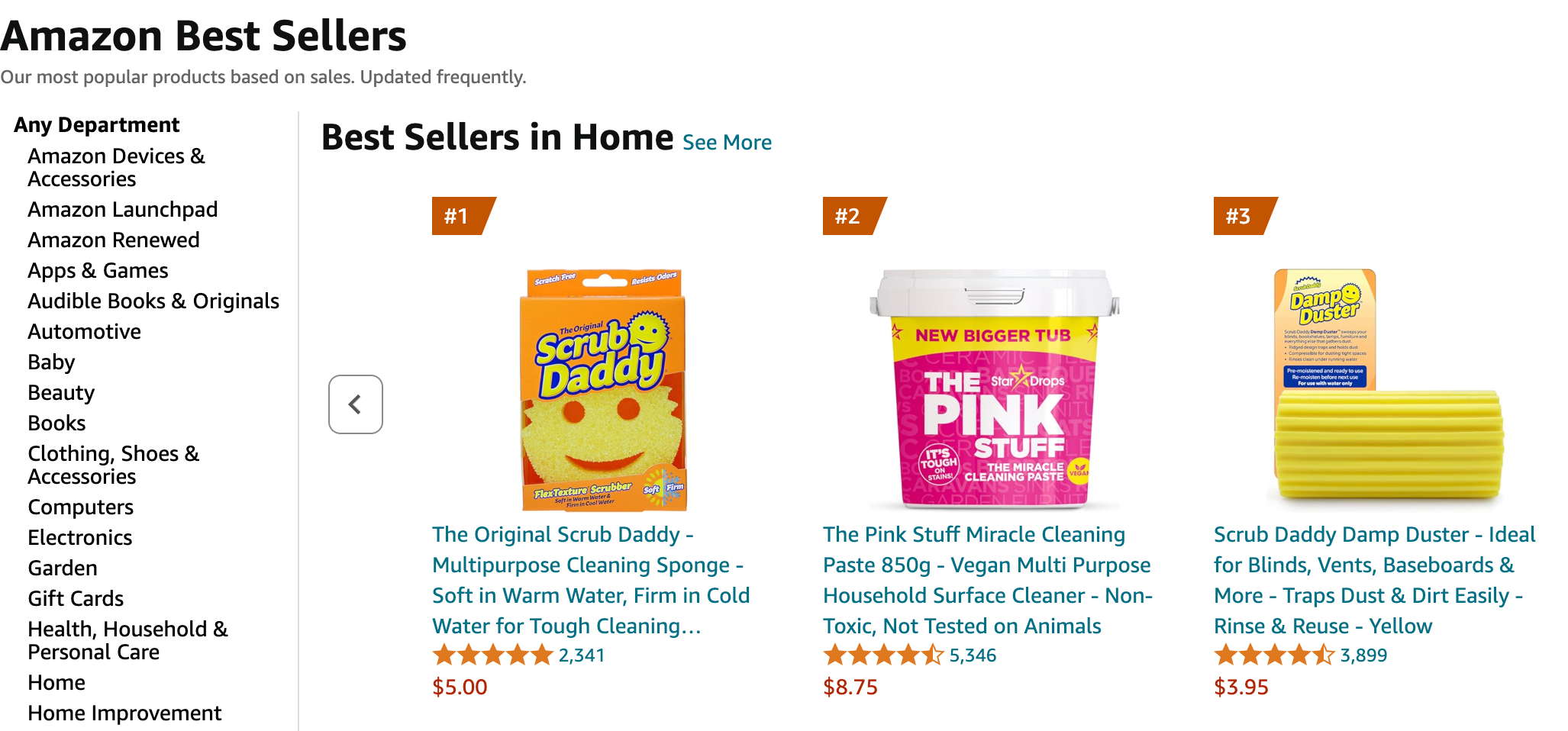
While some tools like Jungle Scout can uncover rich and actionable data that greatly benefits users, these often come with a cost that makes them a better option for those who are further along their entrepreneurial journeys, or those with a higher budget.
One free method to get actionable data is simply by strategically browsing and filtering through public bestseller lists, which is easy to do, especially on Amazon where you can sort best seller rankings by category.
This is a great way to see what types of products are selling well, and a good amount of these products produced by independent private-label sellers can also be sourced and sold in your dropshipping store.
Analyze the competition
Another method to use public data to your advantage for free is simply by analyzing the competition. In addition to browsing top sellers on platforms like Amazon, eBay, and Etsy, you can simply follow the marketing trails that dropshipping companies will leave on social media.
Follow through their sales funnel all the way from their organic marketing to their email list and store to see what they’re doing, especially if they seem to be popular and profitable.
You’ll be able to brush up your product research skills as well by analyzing the competition by challenging yourself to find their product on a supplier database and calculating their estimated profit margin.
An example of doing this would be finding someone selling a slim wallet on their store for $29.99 and then going on a platform like AliExpress scrolling through products until you find a match, making note of the price which in this case might be in the $9.99 range, leaving healthy room for profit margin.
Sometimes they’ll even be using the exact same product image from AliExpress as dropshipping software like AutoDS will often do this to help automate product listings for store owners.
Step 2: Find a fee-free supplier
After you’ve conducted thorough product research, it’s time to find a supplier. While you could spend money on a service or vetted database, you’re better off searching for suppliers on your own for free if you’re just starting out.
Here’s how you find a fee-free dropshipping supplier:
Search and contact suppliers directly
Once you already have an exact product or category in mind, simply Googling the name of the product or category + dropshipping supplier will bring up a good amount of results that you can often just contact directly.
However, take time to vet each supplier by paying attention to how well they communicate and reviewing what kind of policies they offer in terms of buyer protection.
Take the time to read independent reviews about the company or individual supplier if you can be sure that they are good to deal with before ordering a sample.
Ask in public forums
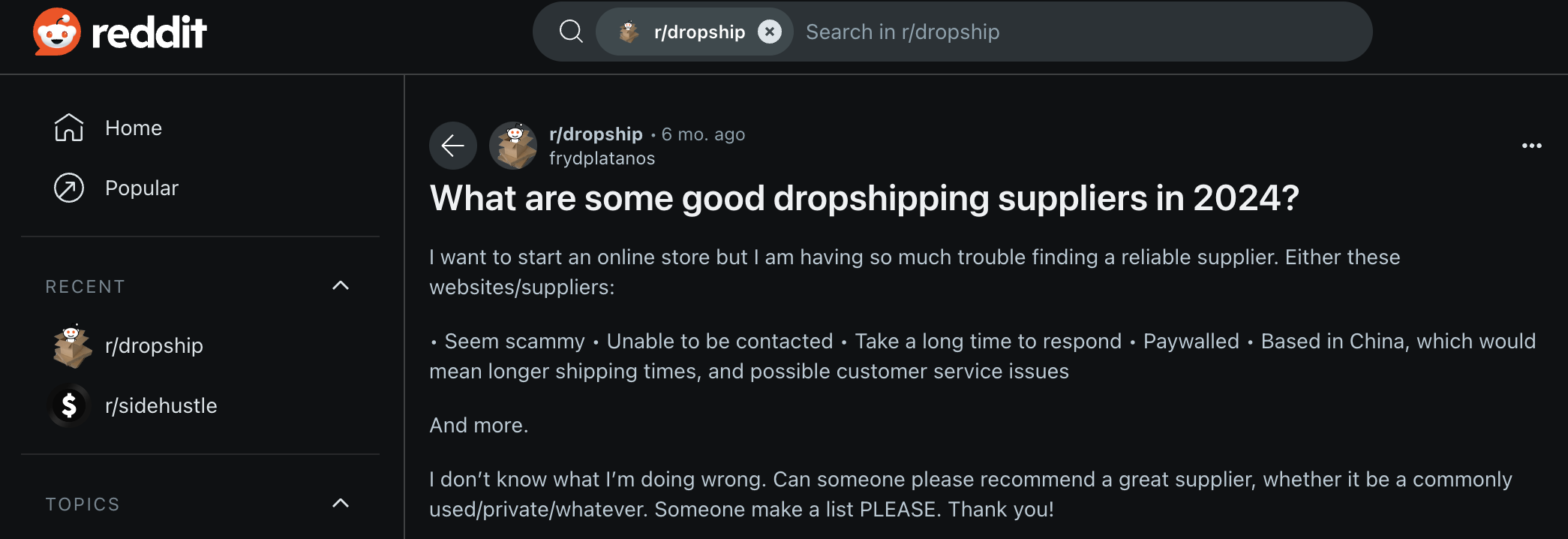
Another way to do free research is by browsing public forums that are dedicated to ecommerce or dropshipping specifically. Search for dropshipping subreddits, Facebook Groups, or Quora threads and look for recent posts asking about suppliers, or make a post yourself if you can’t find any that offer good leads.
However, be prepared to receive advice of varying quality in terms of overall engagement or accuracy. Be sure to cross-reference any suggestion before blindly acting on the advice of a stranger in a public forum who could be driven by ulterior motives.
If you want to avoid this, private dropshipping groups will offer a more curated environment that will guarantee serious and helpful answers.
Browse public ecommerce supplier platforms
Another way to find suppliers is to browse public ecommerce supplier platforms on your own. The best known is AliExpress, which is home to tens of thousands of suppliers in specific niches alone.
- How to Find Dropshipping Suppliers: 7 of the Best Proven Methods
- AliExpress Alternatives for Your Online Business
Let’s get in with more specific examples of free dropshipping suppliers, including the pros and cons of using them.
Examples of free dropshipping suppliers
The following is a list of platforms or suppliers that you can use completely free just by signing up for an account without needing to commit to a paid subscription plan:
AliExpress
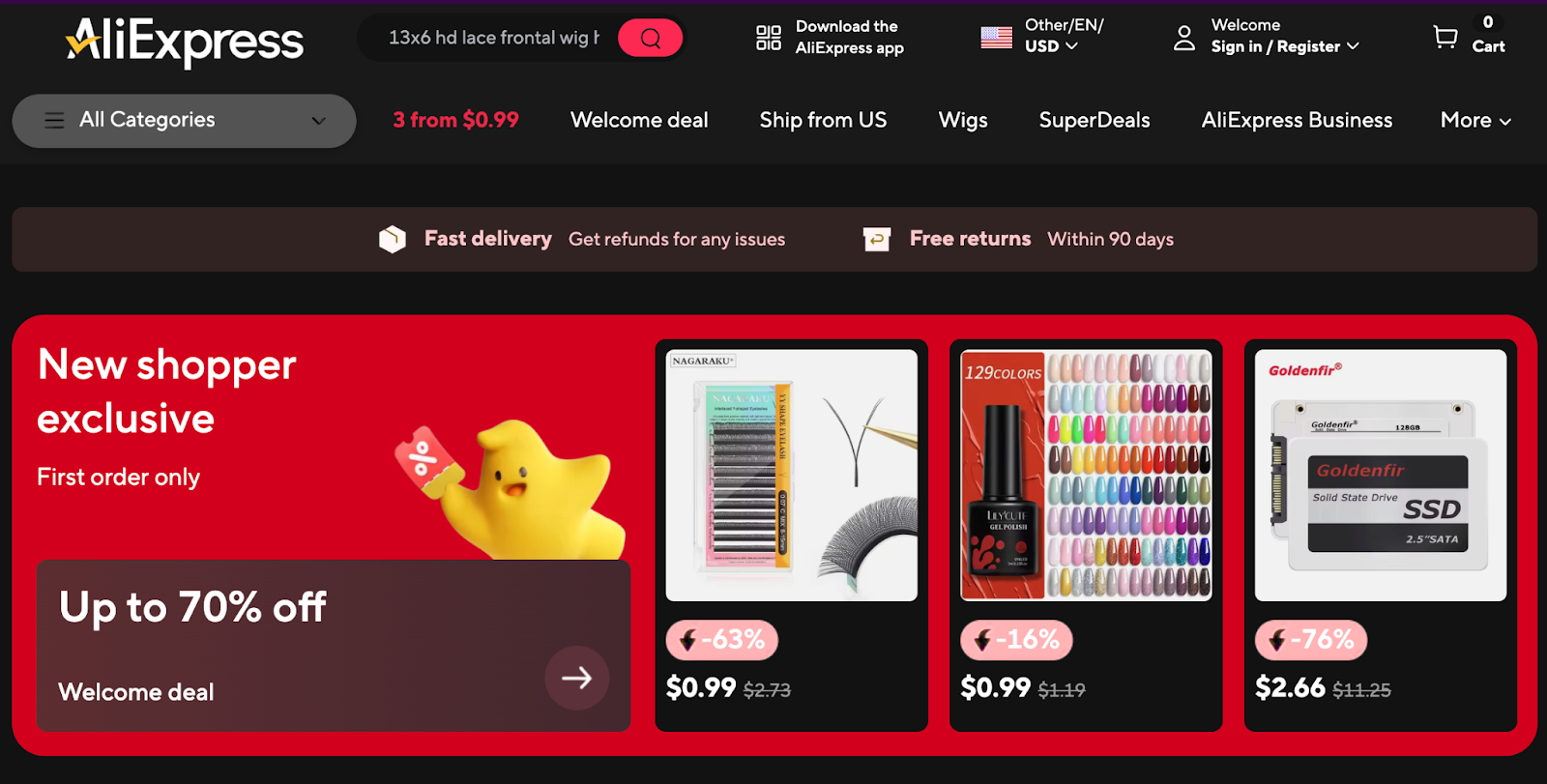
The biggest and best-known marketplace for dropshippers today is AliExpress. Its marketplace is incredibly vast and includes a variety of products that can be used for dropshipping and best of all, it’s free to create an account and contact suppliers.
However, options can prove overwhelming, and you’ll need to filter through many different suppliers and read through reviews so you can thoroughly vet them before ordering a sample.
Temu
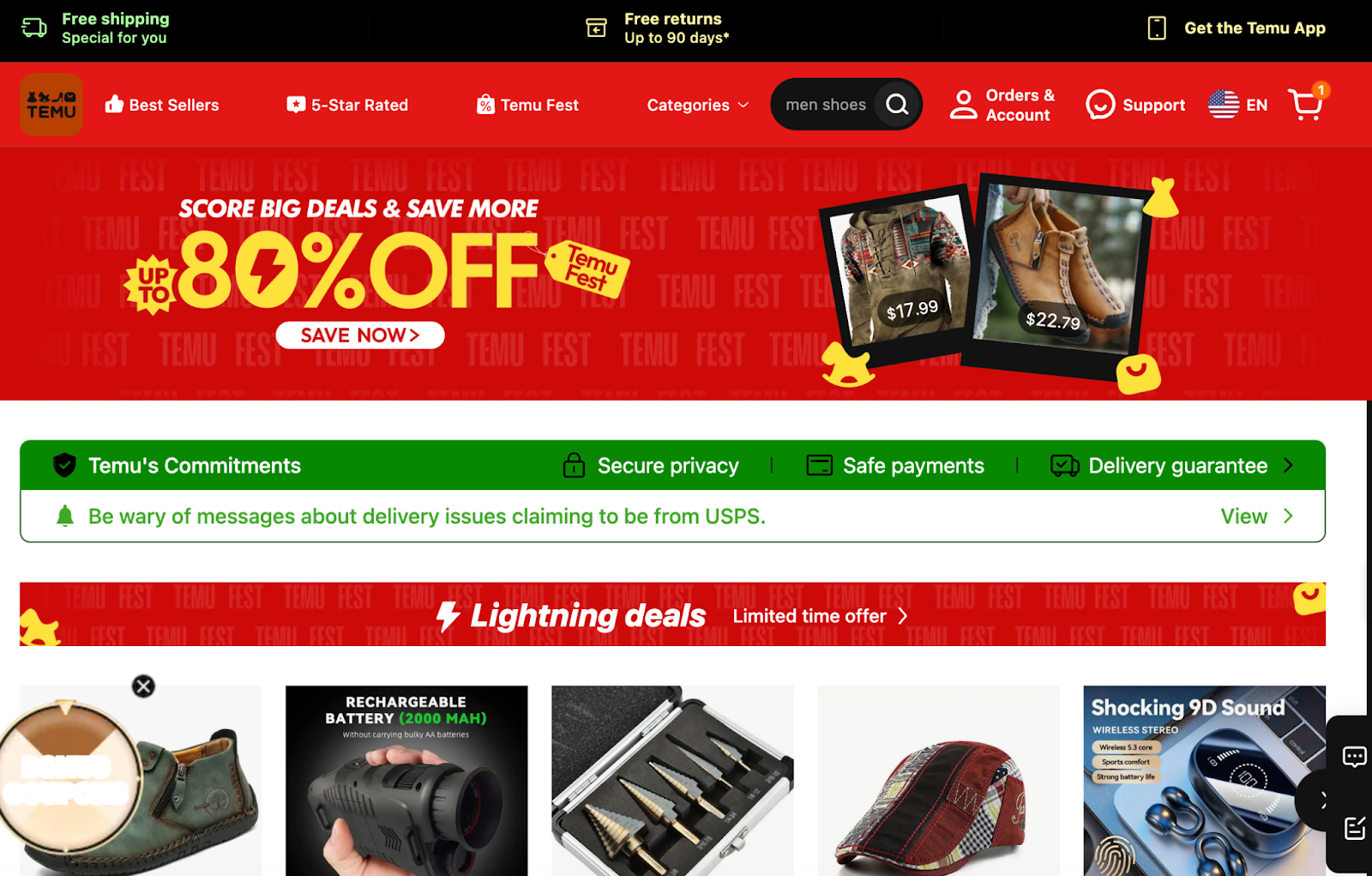
A relative newcomer to the dropshipping space, Temu is also a China-based company that caters specifically to the Western market for those looking to get into the business without spending any money.
The biggest benefit of using the platform is that it’s curated for those looking to dropship, complete with trending products right on the front page, making it a great place for product research as well.
DHGate
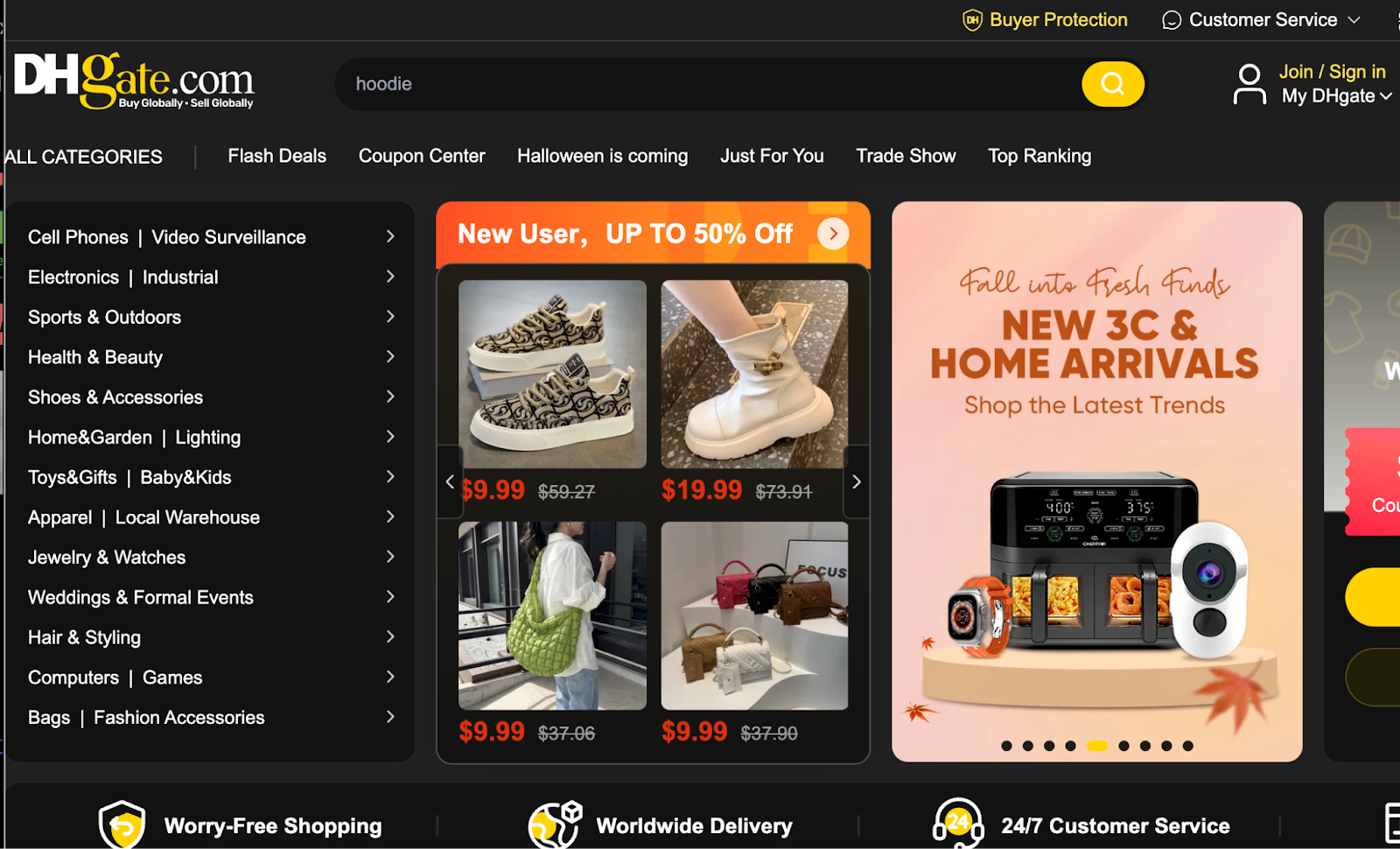
DHGate is another B2B database full of Chinese suppliers that offers a wide range of products across various categories, making it a good alternative to other platforms for deeper research if you’re struggling to find an exact product elsewhere.
Since DHGate also markets to wholesalers, some suppliers might have minimum order quantities (MOQs), so be sure to double-check before becoming attached to a product and its supplier as it might not be possible to order a single order for dropshipping.
CJ Dropshipping
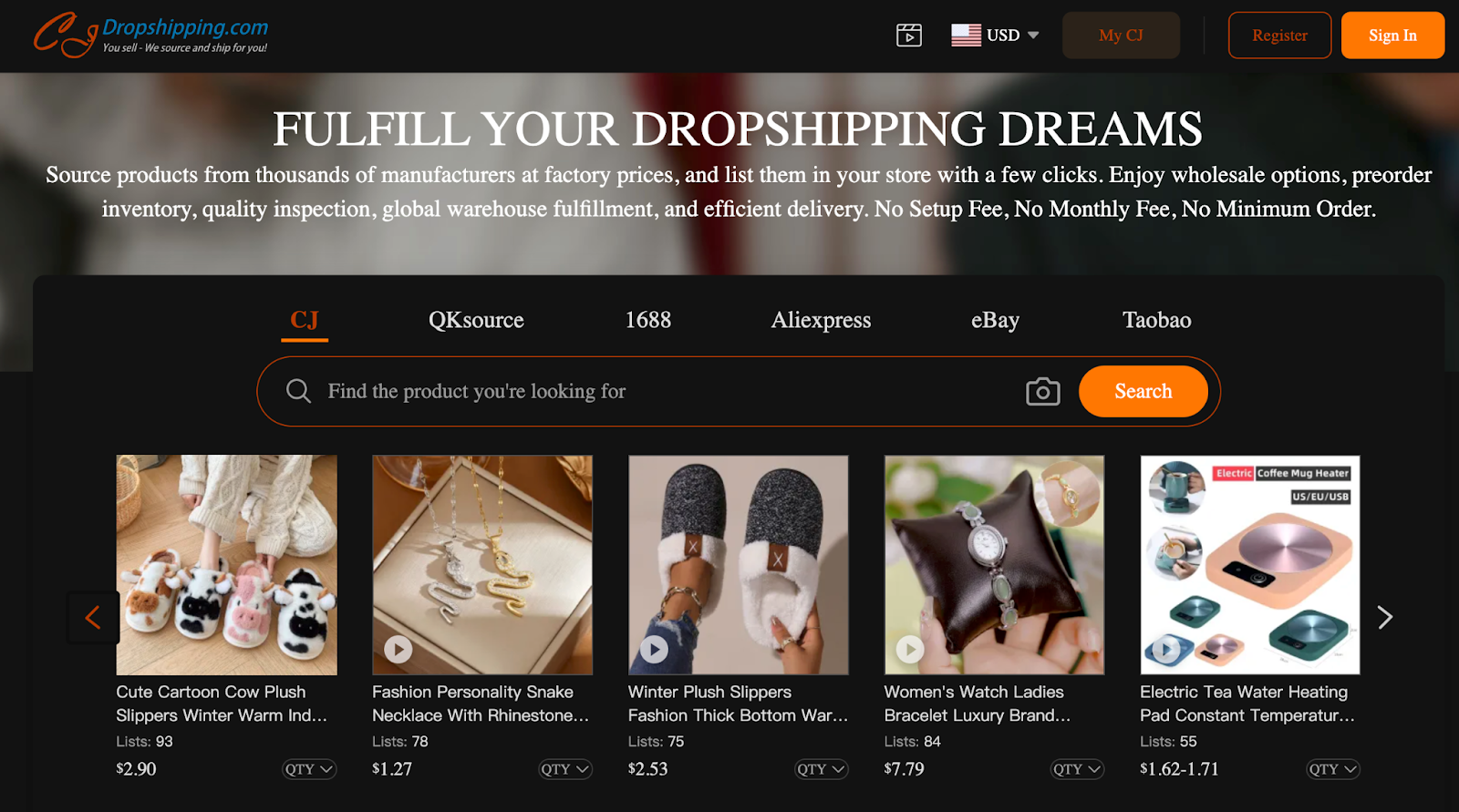
CJ Dropshipping is a platform with businesses that are specifically open to dropshipping, making it an ideal place to find profitable products. It’s free to sign up and browse their entire product catalog which includes items from suppliers worldwide, although most suppliers are located in China.
Due to its product curation and marketing directly towards Western dropshippers, pricing is generally higher compared to marketplaces like Temu and AliExpress, but it’s still a good place to look for products for free.
Banggood
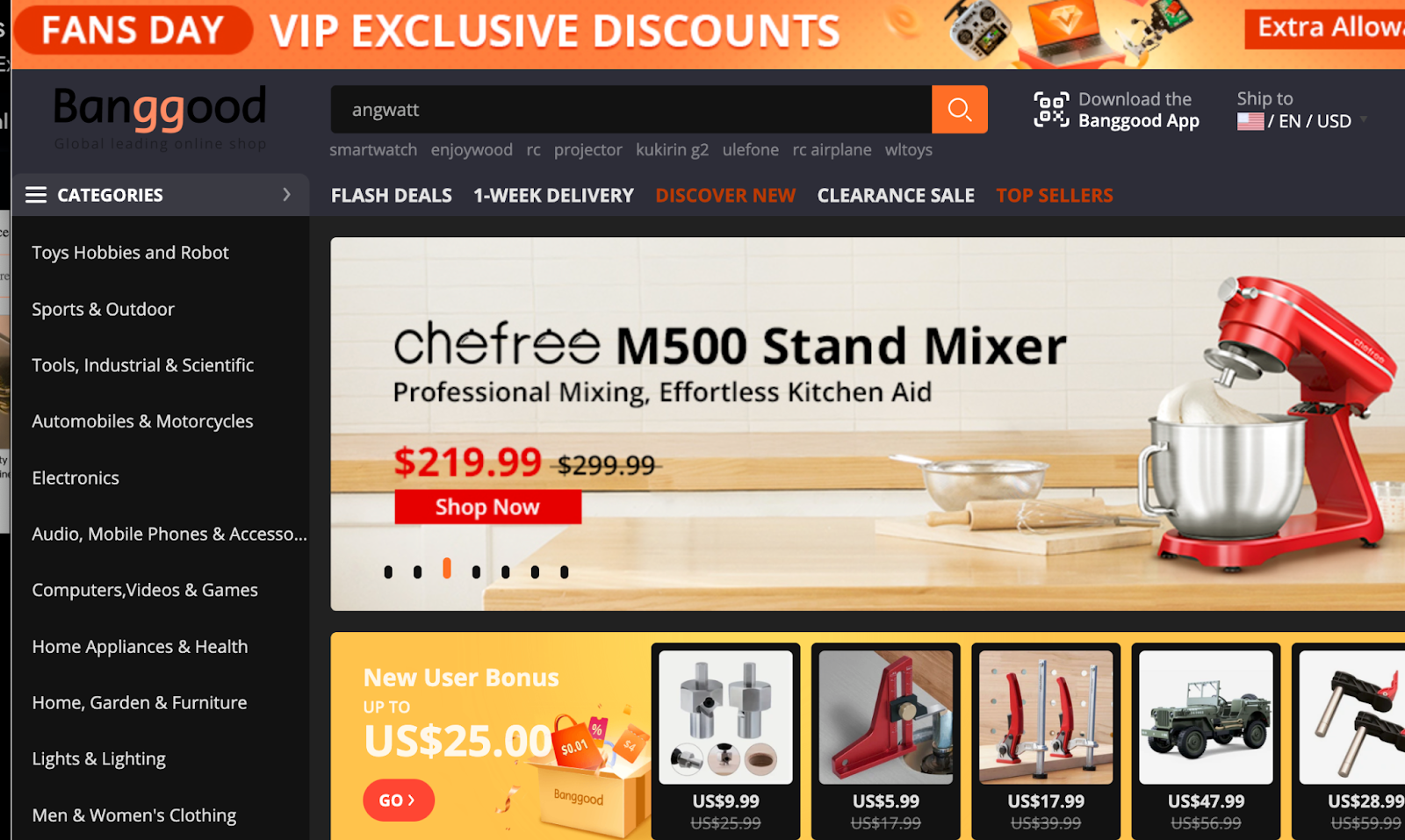
Another Chinese website that’s full of potential dropshippers and free to sign up for is Banggood. It’s more known to have home goods and electronics rather than the typical trending gadgets, but this makes it a place to potentially find lucrative high-ticket dropshipping products.
Doba
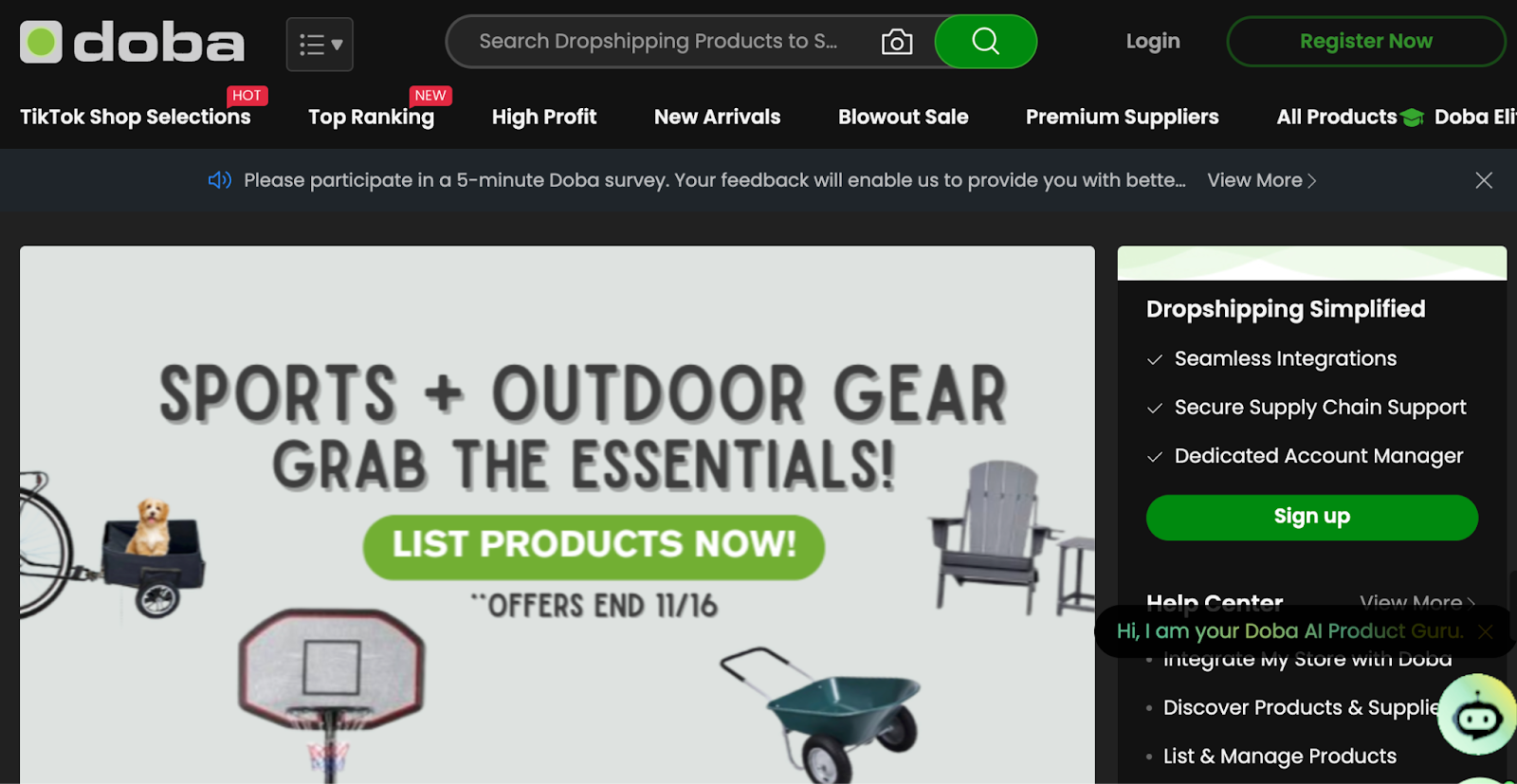
Doba is another platform that’s marketed directly towards dropshippers, and it even features helpful categories such as TikTok Shop, High Profit, and Premium Suppliers.
It’s worth noting though that to access their full functionality, which includes integrations with ecommerce storefronts, you’ll have to pay an ongoing subscription, but they do offer a free trial.
Printful
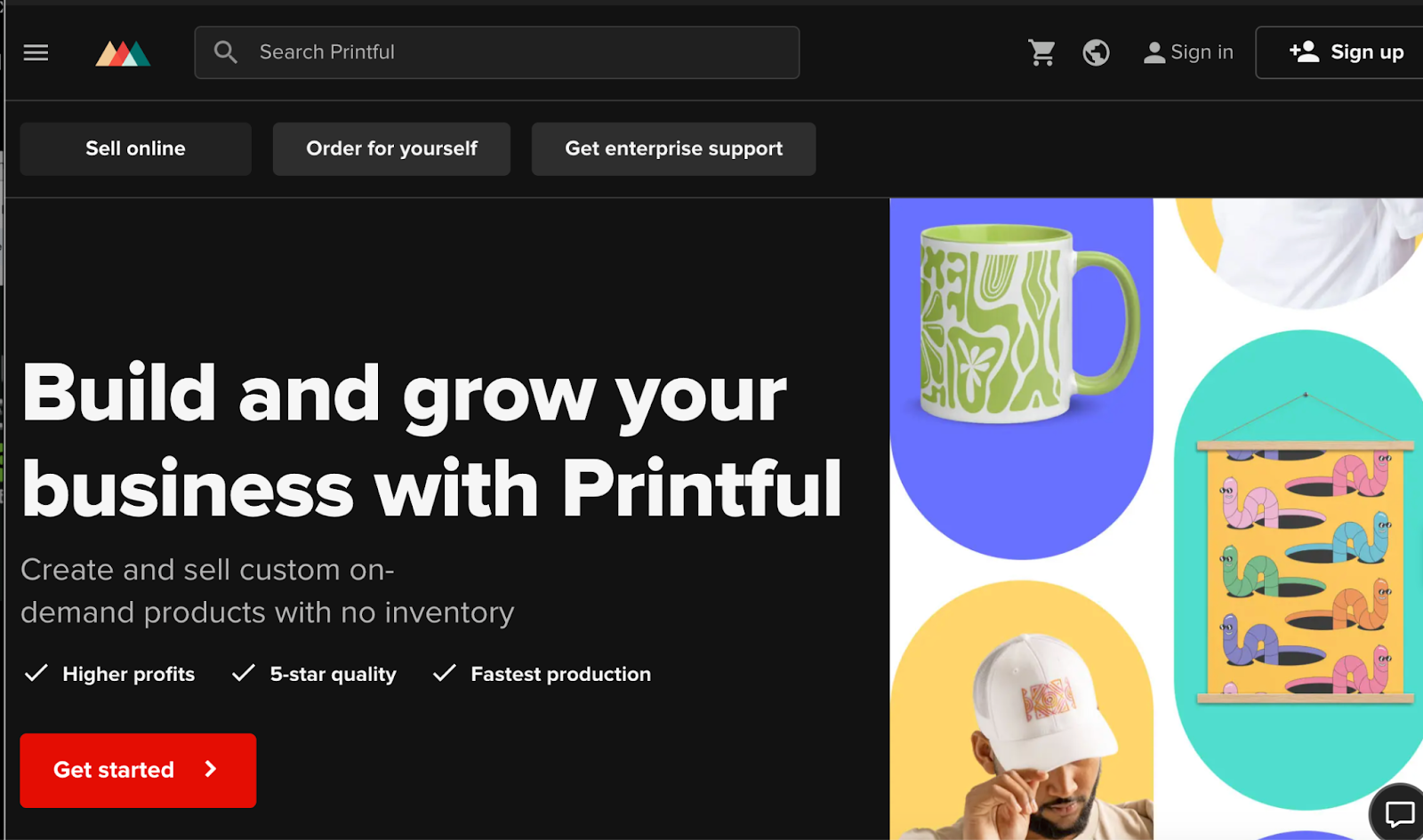
One of the best free dropshipping strategies is print-on-demand, a business model that allows you to sell custom merchandise and goods with designs that are printed only as orders come in, meaning you don’t have to buy any of this inventory up front, and the supplier doesn’t have to make anything until an order comes through, which is a win-win for both parties.
Printful is a reputable company that offers high-quality print-on-demand for various items ranging from merchandise to goods like coffee mugs and more.
Printify
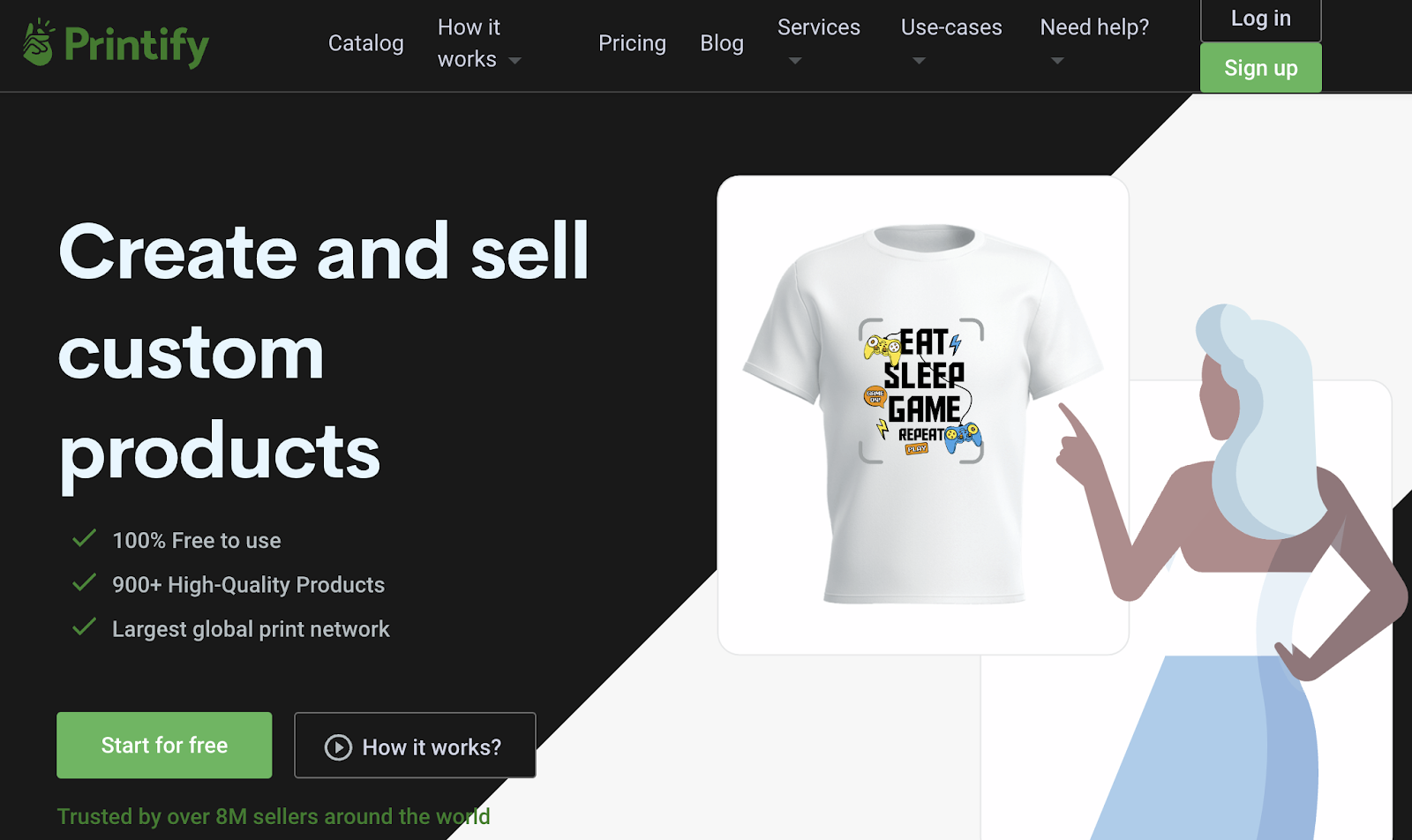
Like Printful, printify is a print-on-demand platform that’s free to join. They offer a wide range of customizable products and work with a range of print-on-demand providers that all offer reasonable shipping, acting as an intermediary for these various merchants to offer their customers more flexibility in terms of styles, products, and fulfillment times.
Step 3: Set up your storefront for free
Once you’ve picked your product and a supplier, it’s time to stock your digital shelves so you can start pushing your product to the masses.
While some common solutions for dropshippers such as Shopify require choosing a paid subscription to gain access to full ecommerce functionality, there are a number of platforms that you can use to launch a store completely free.
Free storefronts
TikTok shop
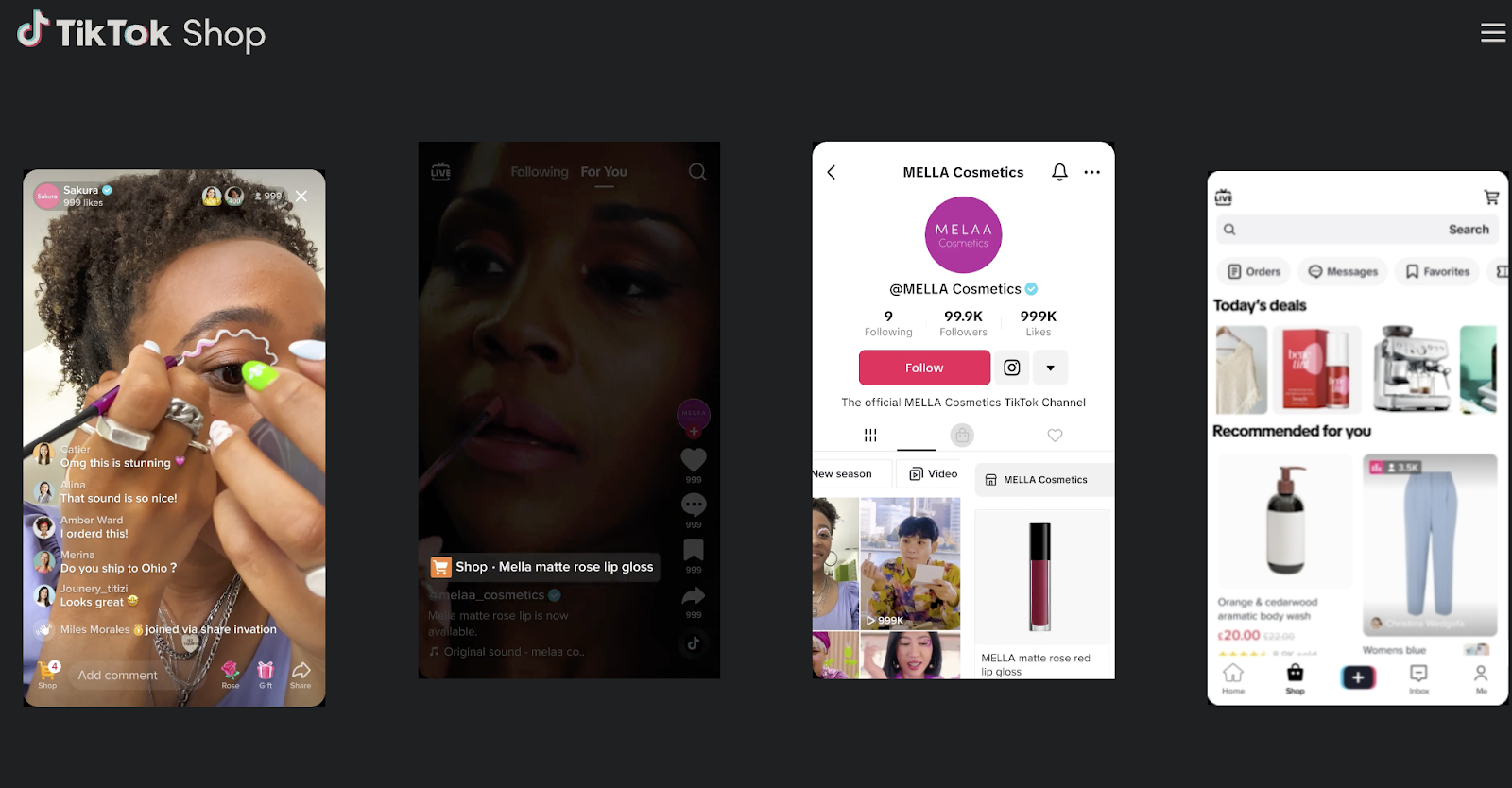
TikTok is arguably the most influential social media platform in terms of dictating what is cool and what people should be doing and buying, so it’s no surprise that it’s been a go-to place for dropshippers to market their products for years.
Recently TikTok Shop was launched as a way to get consumers to buy products directly on the social media platform through an integrated store.
Pros:
- ✅Seamless buying experience
- ✅Direct access to targeted users
- ✅Potential for virality, especially with trends
Cons:
- ❌Limited only to TikTok users
- ❌Often requires constant content creation to gain and maintain visibility
- ❌Doesn’t allow for the same control of pricing and profit margins as having your own store
Wix
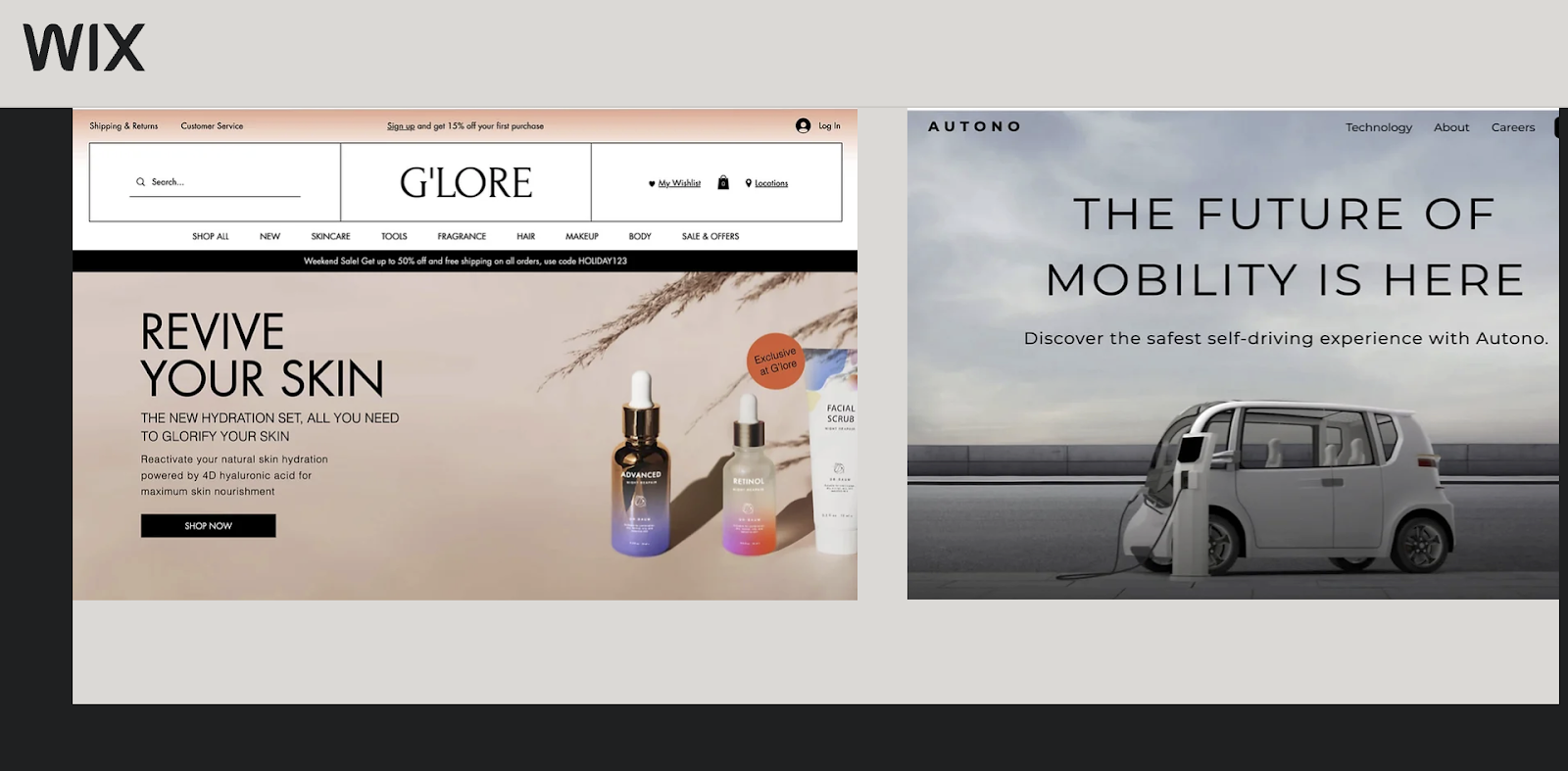
One of the most beginner-friendly platforms for building a website, including a site with ecommerce functionality that can be used for dropshipping is Wix. Their drag-and-drop builder and a good selection of themes are all available to use completely free and without any previous coding or website-building knowledge.
Although it’s free to start, premium plans with full functionality come at an ongoing subscription cost.
Pros:
- ✅Beginner-friendly, drag-and-drop builder that can be used without coding knowledge
- ✅Good selection of free themes and templates
- ✅Basic ecommerce functionality available in the free plan
Cons:
- ❌Wix branding throughout the free websites
- ❌Full ecommerce functionality is only available with paid upgrades
- ❌Limited storage and bandwidth on free plan
Woocommerce
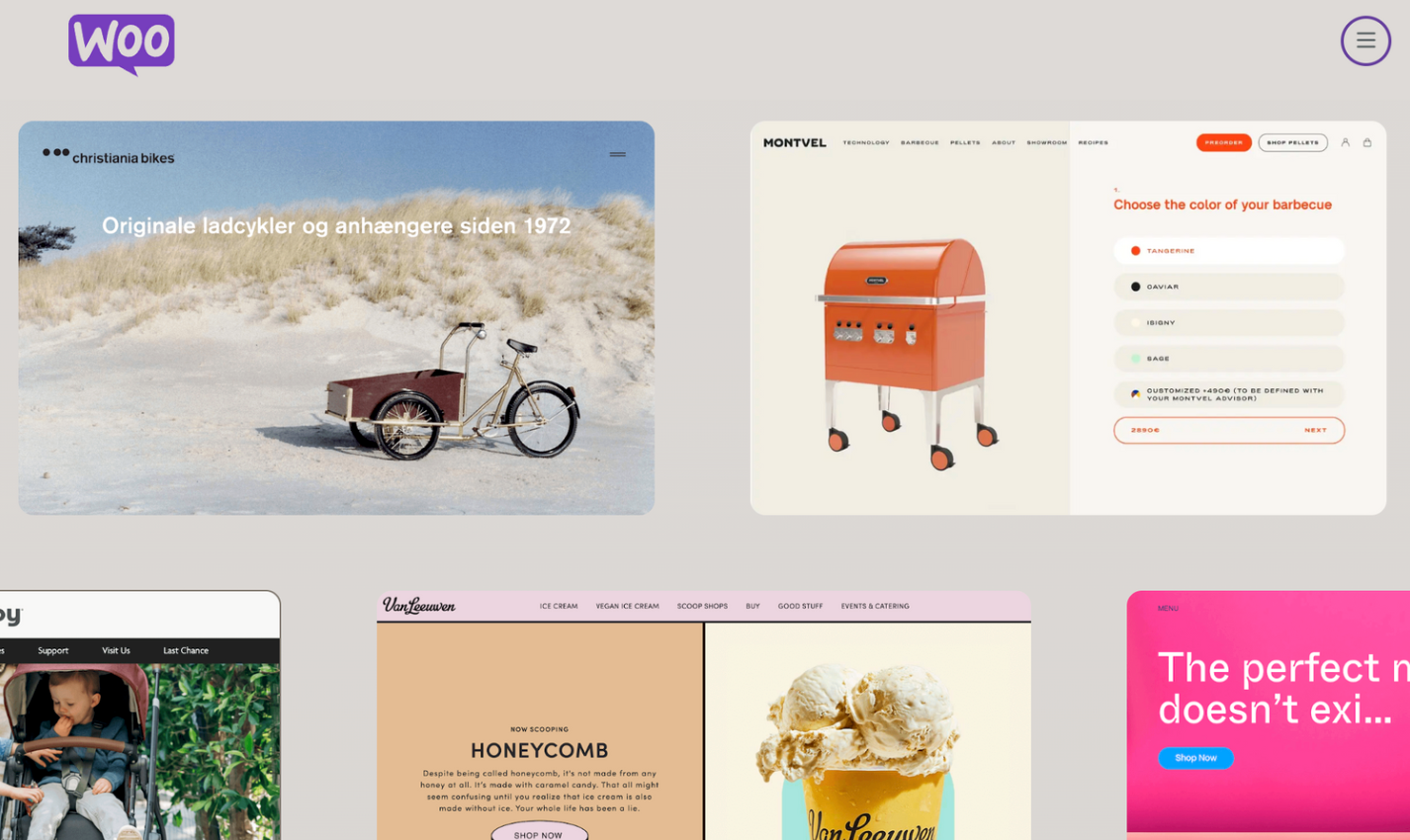
One of the most powerful free ecommerce solutions with over a decade of history is Woocommerce. Built on WordPress, it requires basic technical knowledge to install and use, and if you want to customize or upgrade your Woocommerce store, this often means buying plugins through their store which can be quite costly and can also require support to install and maintain.
Pros:
- ✅Highly customizable and powerful infrastructure
- ✅Large ecosystem of plugins
- ✅Full ownership and control of your website
Cons:
- ❌Requires outside hosting plan
- ❌Some degree of technical knowledge and familiarity with WordPress is a must
- ❌Need for paid plugins to gain full functionality
Ecwid
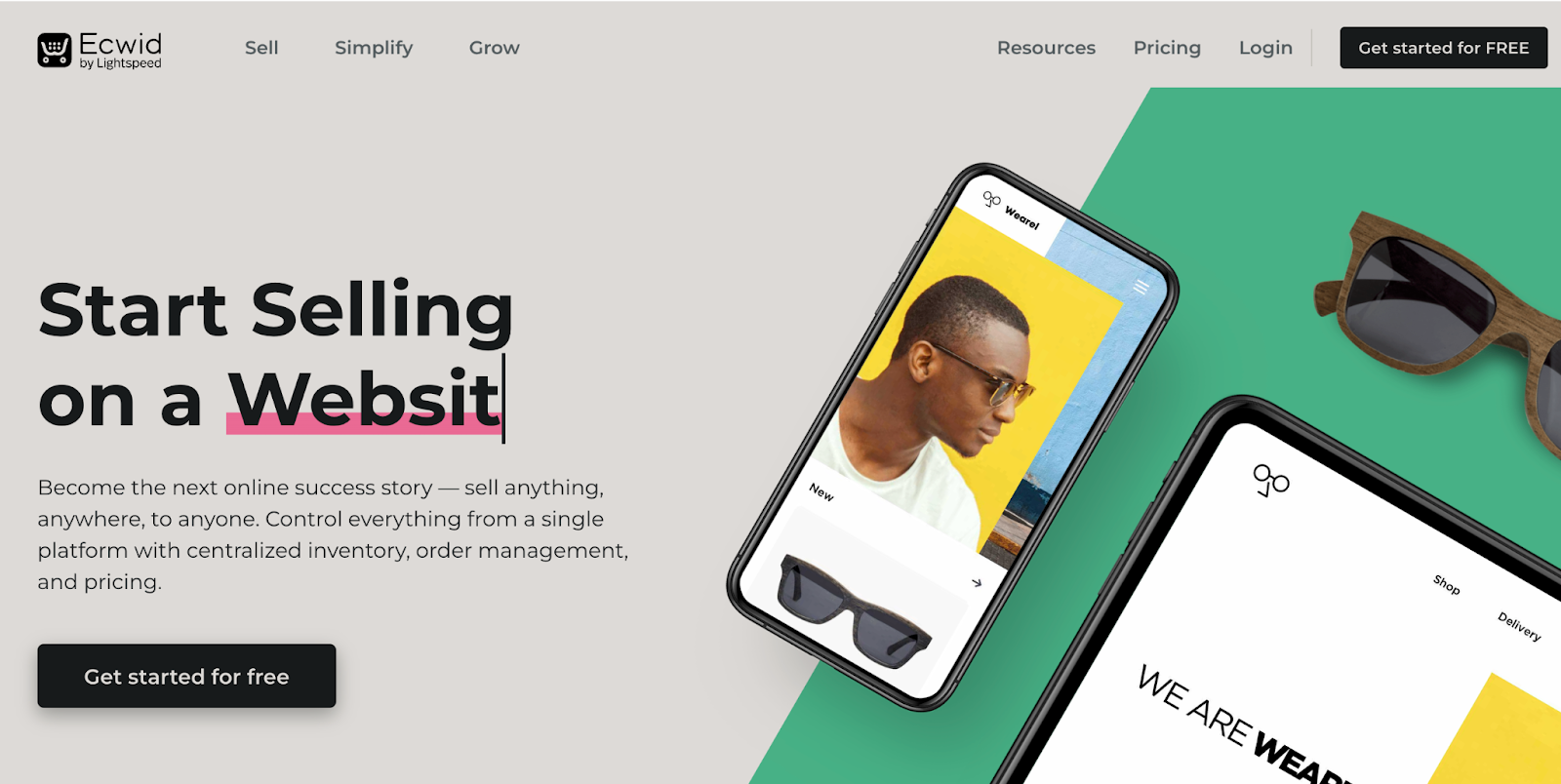
While it’s not as well known as these other website builders, Ecwid has been around since 2009 and has recently revamped to market towards ecommerce owners, particularly owners of dropshipping stores.
Their main selling point is the ease of integrating with multiple channels, including social media, and it offers both free and paid plans.
Pros:
- ✅Easy integration with existing websites or social media
- ✅User-friendly interface
- ✅Supports scaling with multiple sales channels
Cons:
- ❌Free plan is limited in terms of product capacity and functionality
- ❌Less customizable than other platforms
- ❌Advanced features will require expensive upgrades
Free marketplaces
If you want to get your dropshipping product out straight away for free without even needing to build your own storefront, you can launch by listing on one of the following free marketplaces:
Facebook Marketplace
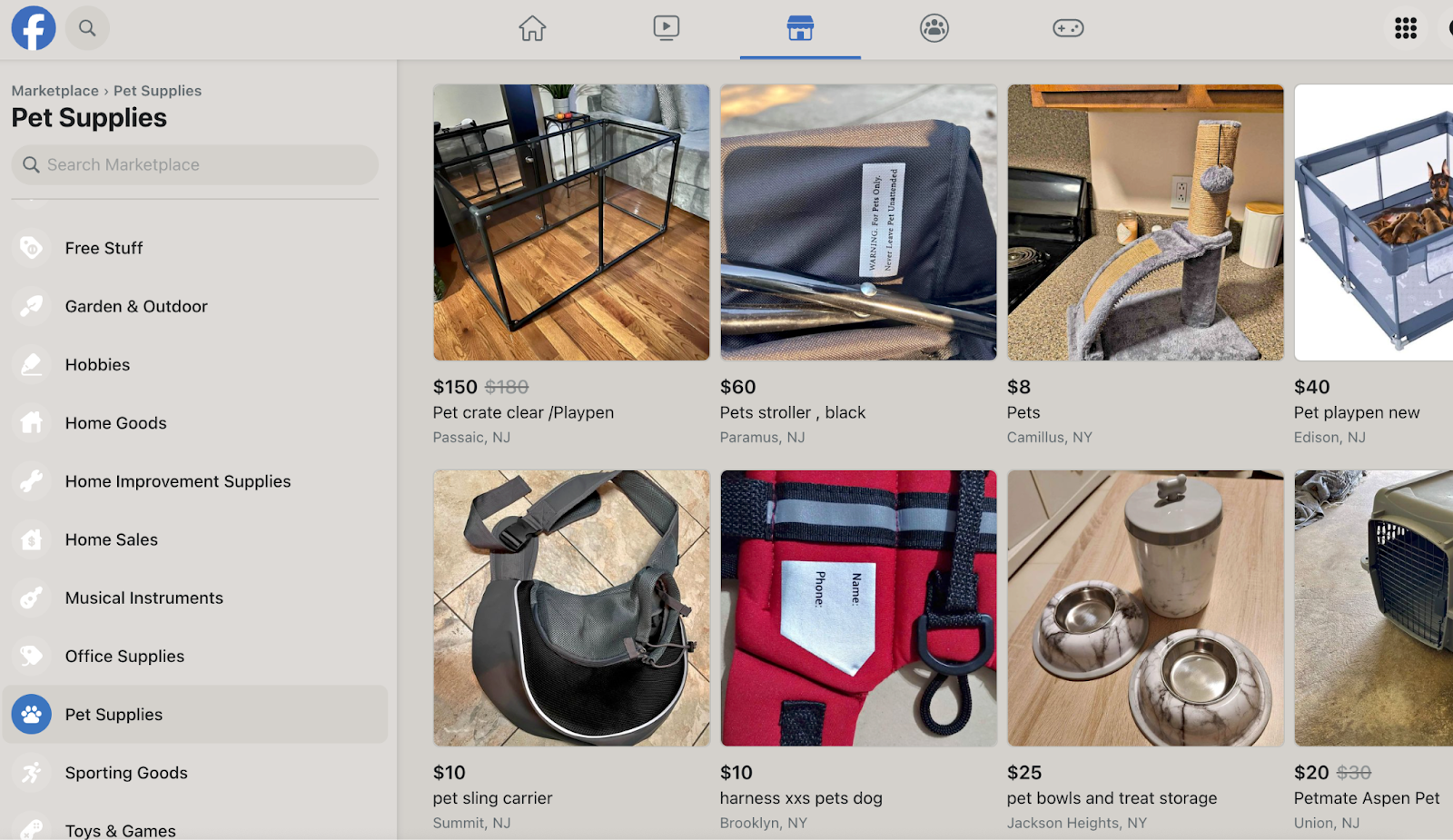
One of the most immediately available and easy-to-use free marketplaces is Facebook Marketplace. If you have a Facebook account, this means you already have an account with Facebook Marketplace, and since this is also true for your potential customers, listing a product here means you reach a large audience quickly.
However, you’ll be competing with local sellers and those who only want to deal in person.
Pros:
- ✅Instant access to a large user base with no signup or account creation process if you already have a Facebook account
- ✅Can use ads to gain visibility
- ✅No listing fees
Cons:
- ❌High competition and saturation in popular niches
- ❌Limited way to stand out from the competition
- ❌Fewer customers willing to buy online as the preferred method is in-person meetups
eBay
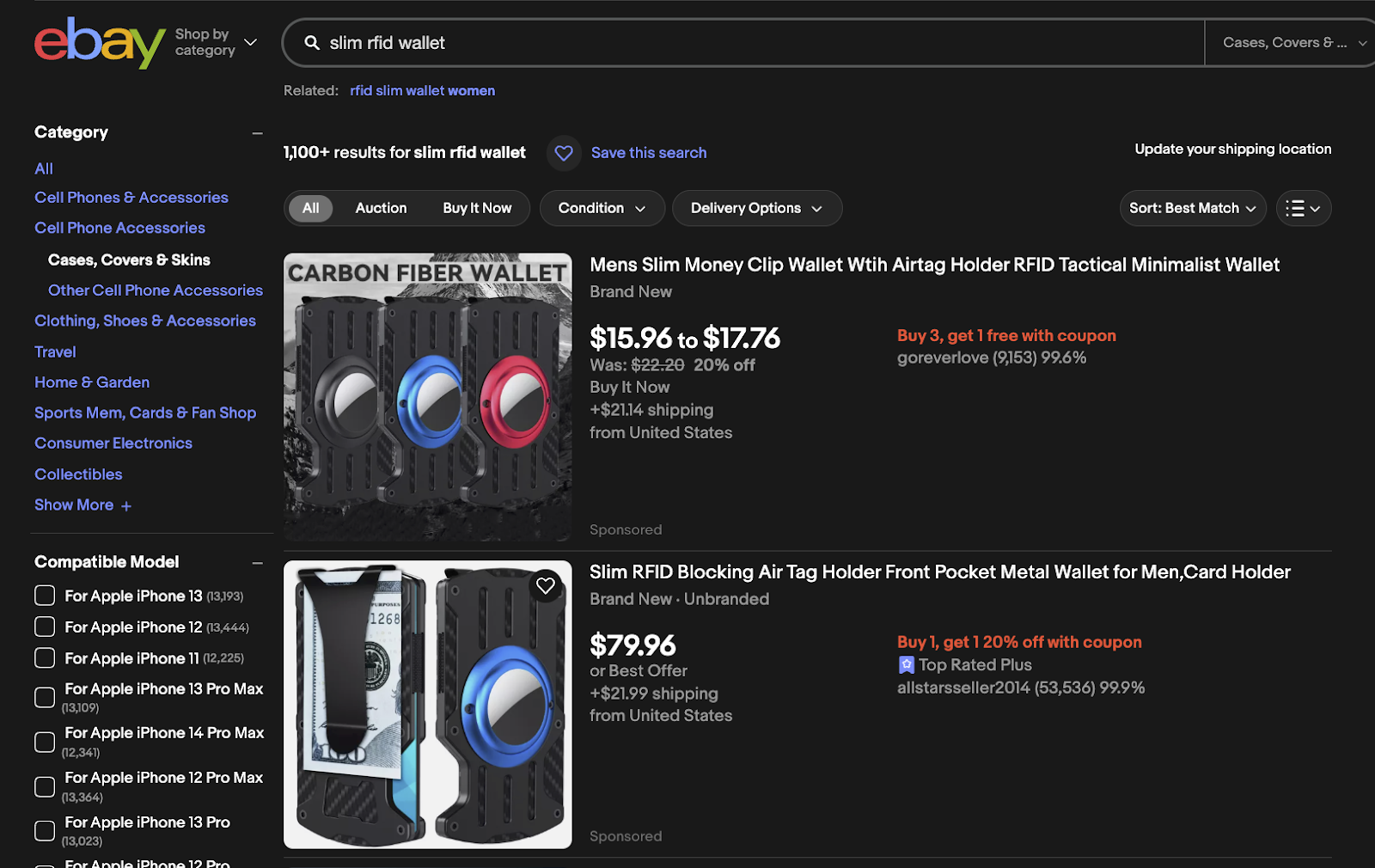
One of the oldest names in ecommerce, eBay, is also a place where you can launch your dropshipping store totally free without needing to build or host it. However, competition is fierce, and although it’s free to create an account and sell, there are selling fees that can add up quickly and cut into your profit margins.
Pros:
- ✅Large and established customer base
- ✅Free access to helpful data like historic sales prices and competition
- ✅Fast, easy, and free account creation
Cons:
- ❌High competition from established sellers, including some that are suppliers or manufacturers
- ❌Assortment of fees that can destroy profit margins
- ❌Limited control over store branding and differentiating from other listings
Etsy
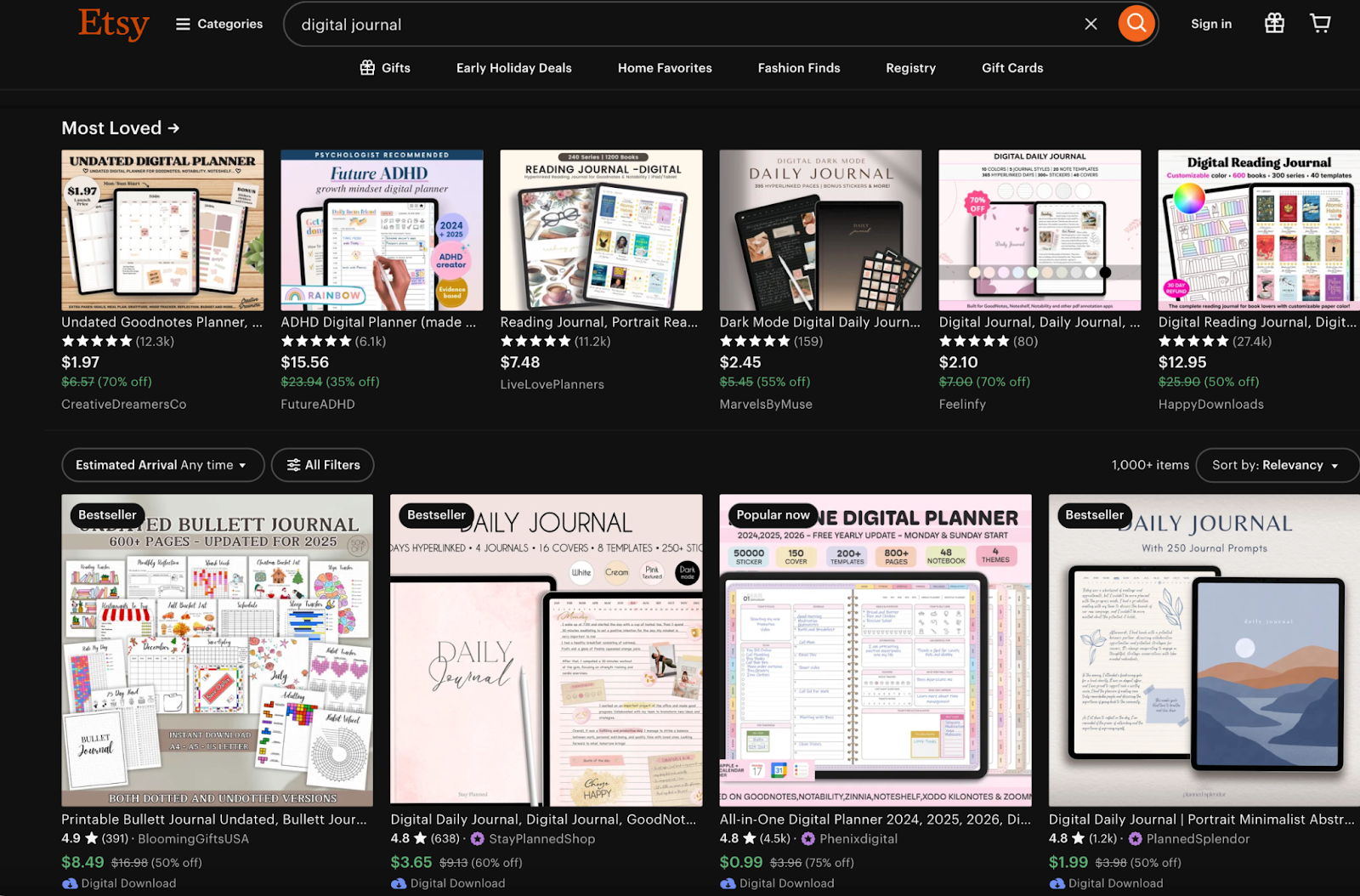
While it started as a marketplace only for hand-made physical goods, Etsy has now expanded into the digital realm, offering the opportunity to sell both physical and digital dropshipping products on the platform.
However, the platform still has policies against mass-produced dropshipping goods, so you need some sort of custom component such as print-on-demand or a unique design to comply as a seller on their platform.
Pros:
- ✅Targeted audience
- ✅Potential for lower competition in certain niches
- ✅Good seller support
Cons:
- ❌Need to comply with stricter policies compared to other platforms
- ❌Fees can add up quickly
- ❌Only suitable for certain niche products, so can’t be used for some of the most popular trending products
Whop
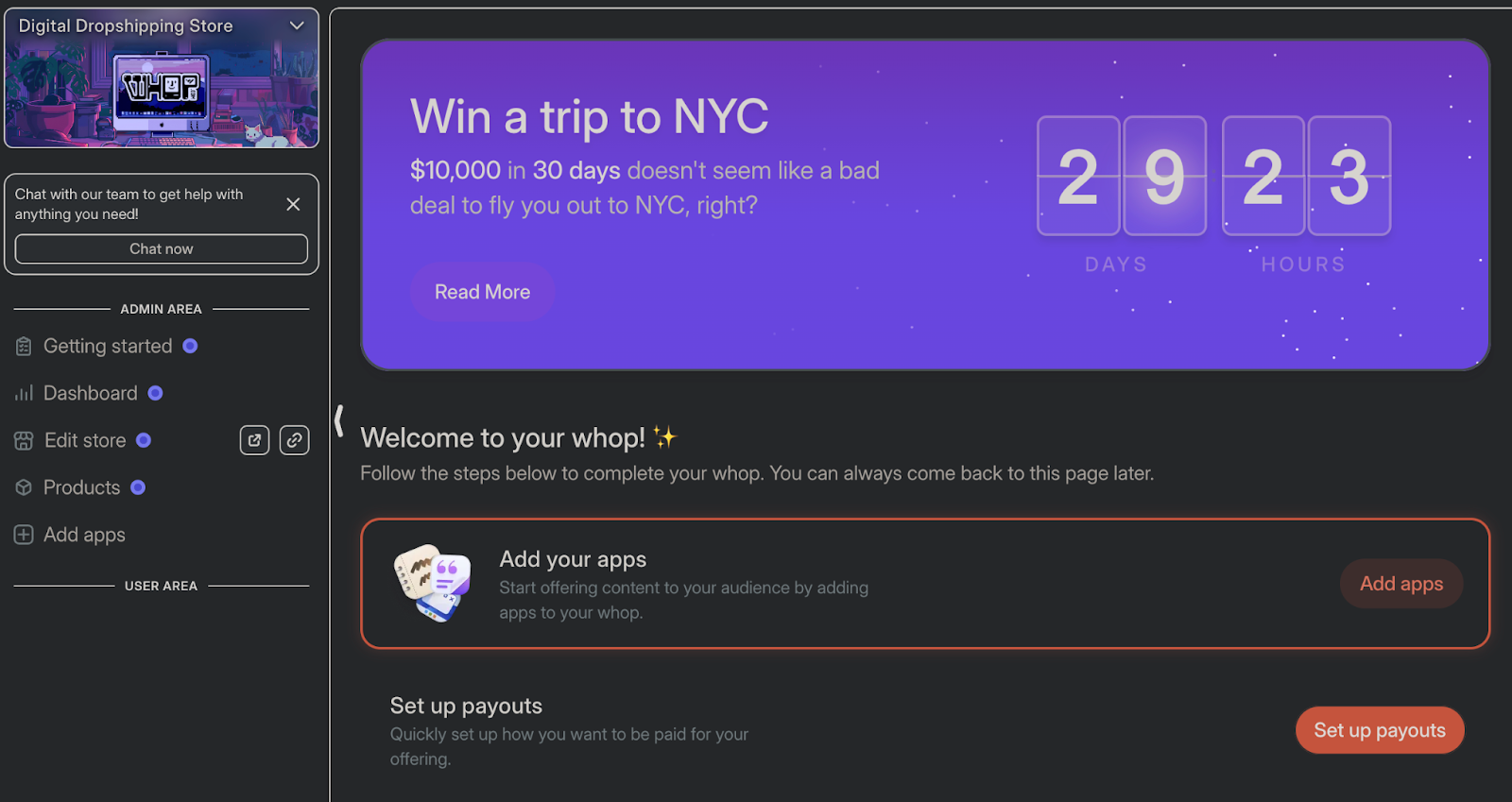
As a marketplace designed as the number one home to both buy and sell digital goods of any kind, Whop is a great solution if you want to get into digital dropshipping.
Launching a store is fast and easy, and its user-friendly and intuitive design also makes for a pleasant shopping experience for customers. Signing up is quick and totally free and also includes the handling of payment processing and secure instant delivery of digital products.
Pros:
- ✅Top marketplace for digital goods of any kind
- ✅Easy to use for both buyers and sellers
- ✅Home to many reputable sellers and products
Cons:
- ❌Only for digital products
Step 3: Launch a marketing campaign
No matter how good your product or store is, you won’t make any sales until you learn how to reach as many customers as possible through effective marketing.
If you want to succeed here without spending any money, you’ll have to employ organic marketing strategies such as the following:
Social media marketing
One of the best ways to get the word out about your store and its products totally free is by leveraging the power of social media. Since it’s free to create an account on any platform, set up a professional profile on all the main ones, including TikTok, Instagram, and even YouTube or Pinterest.
Consistent posting within a niche while paying attention to trends and other viral videos will help you gain exposure and build your brand and reputation. Read more about effective selling with social media in our guide here.
Email marketing
Getting your customers on a targeted list with email marketing is one of the best ways to foster a relationship with your customers and build brand recognition and loyalty. Make sure to put an email opt-in form on your website, complete with an incentive to join such as a coupon or free ebook.
While many email marketing software plans are paid, companies like Mailchimp will offer free plans that are suitable for brands starting out.
Influencer collaborations
Getting marketing from larger influencers or UGC creators might cost money, but you can get smaller influencers to market your product for free if you incentivize them with commission or if you’ve grown your following to a respectable size already on your own.
Online forums
Targeted online forums in places like Reddit, Facebook groups, and Quora can be ripe environments to interact with potential customers. Be sure not to spam with overt promotion but contribute to conversational topics and add value by offering helpful and relevant advice in addition to suggesting your product or store as a solution.
Step 4: Start selling and keep evolving!
Once you’ve set up your store, sourced your products, and launched marketing efforts, it’s time to start selling like a true dropshipping store owner.
Here are some tips that will help set you up for success in the long run:
Keep your customer service on point
One of the most important things to do well with when running a brand of any kind, dropshipping or not, is keeping a high personal bar for customer service. Let your customers know that you’re open to feedback and respond promptly to inquiries, address issues fairly and professionally, and keep improving. Good customer service can make or break your brand’s reputation, so don’t skimp on it.
Analyze and monitor
Pay attention to analytics, using free tools and metrics if you have a store or platform that provides a dashboard. Create goals and KPIs and use spreadsheets to track your performance so you can effectively monitor and quickly make decisions when it comes to analyzing the performance of your store or individual products.
Stay educated
Ecommerce, particularly dropshipping, is a constantly evolving landscape, and those that are on top of the latest trends and effective strategies will prosper while anyone who is slacking in these areas can quickly fall behind.
Join a course or community that is dedicated to dropshipping so you can gain and keep a competitive edge with up-to-date education.
Build your brand
While dropshipping can be a way to make money by selling various products, it’s important to not forget how focusing on building your overall brand presence is much more important than making money off of individual products.
By building a brand, you can foster a loyal customer base that you can launch future products to, and if it makes sense financially, you can even move away from dropshipping and build a more legitimate ecommerce brand once you’ve established your product and audience.
The 5 best products to start dropshipping for free
In general, customers of dropshipping products make their purchasing decisions quickly, so the best types of products to sell are not too expensive, currently trending, and fit a somewhat urgent need or desire.
While the landscape and specific products in ecommerce and dropshipping are always changing, here are some evergreen categories that have performed well historically and are continuing to have strong sales:
1. Phone accessories
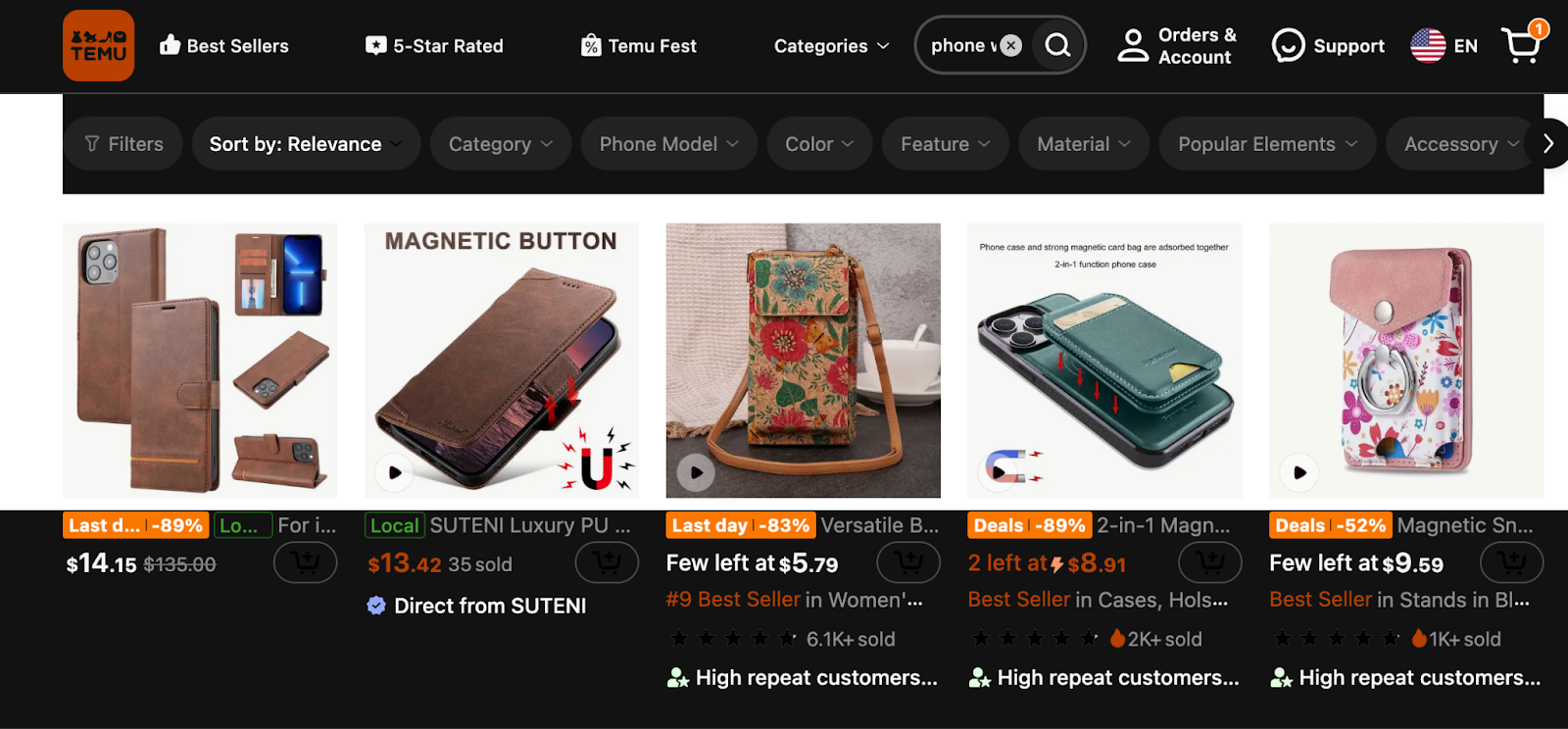
Virtually everyone who owns a smartphone is in the market for an accessory, and when it comes to products for dropshipping, the more novel and useful, the better. This means multi-functional cases, mini-projectors, and other cool gadgets that are eye-catching and do well in viral video marketing.
2. Fitness-related products
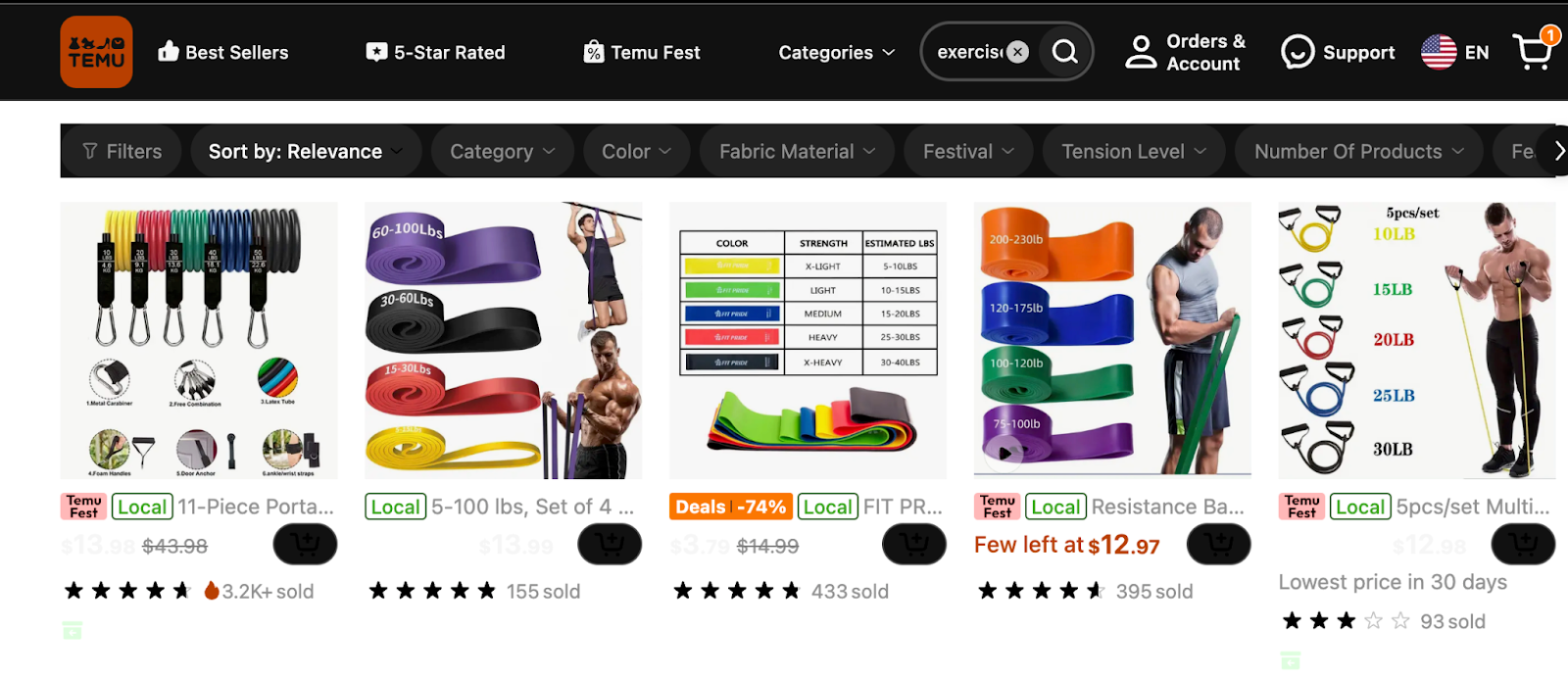
Another market that will always have steady demand is that of health and fitness, and as a dropshipper, you have plenty of niche products to choose from that have winning potential.
Small, easy-to-ship generic items like fitness bands, simple trackers, and compact rollers or personal massagers all have the potential to do well in a dropshipping store.
3. Eco-friendly products
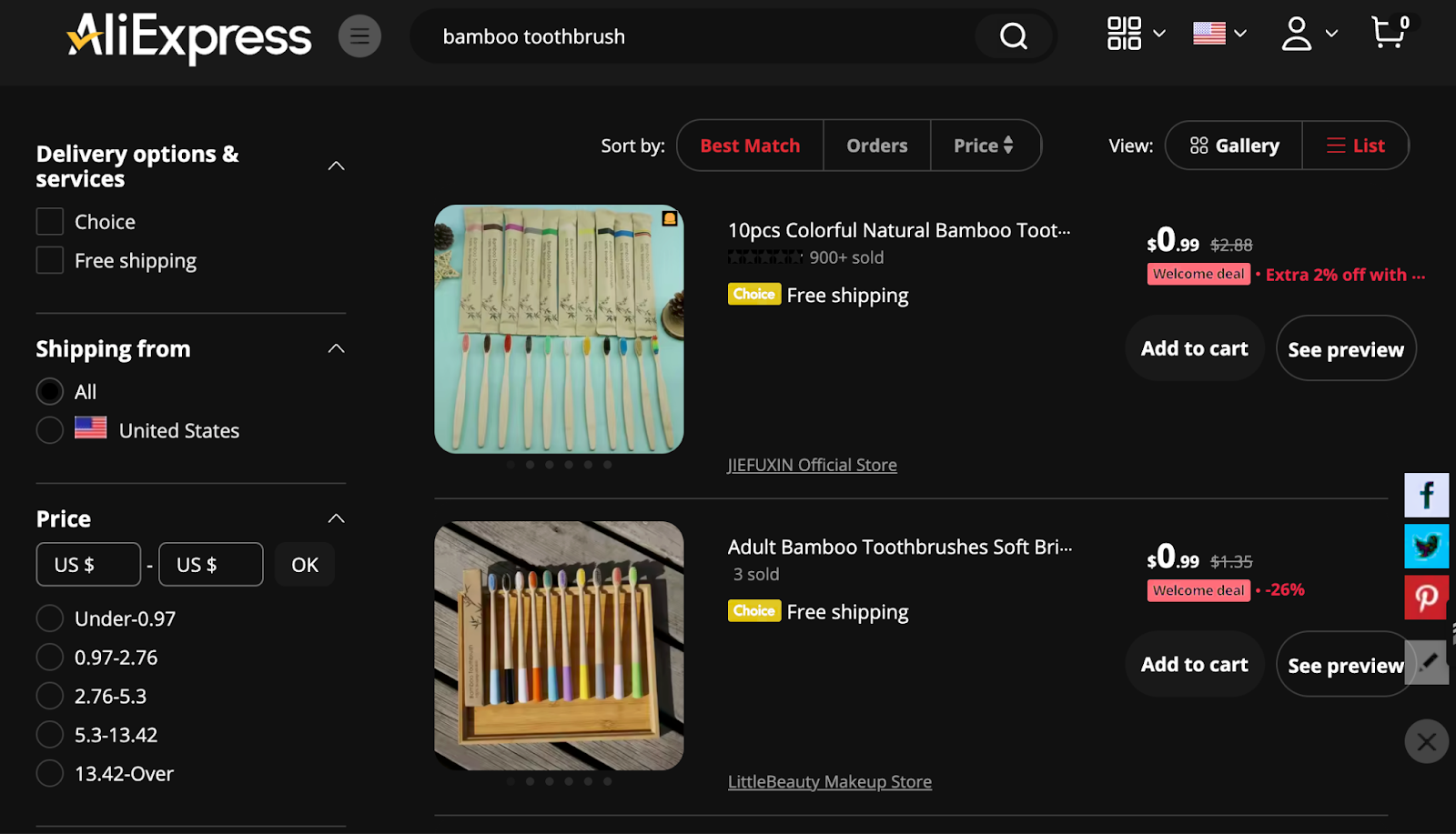
More consumers are becoming conscious of how the products they buy impact the environment, so a growing group is looking for eco-friendly products. As a dropshipper, you can fit this need with products like bamboo toothbrushes, recycled reusable water bottles, or biodegradable phone cases.
4. Pet accessories
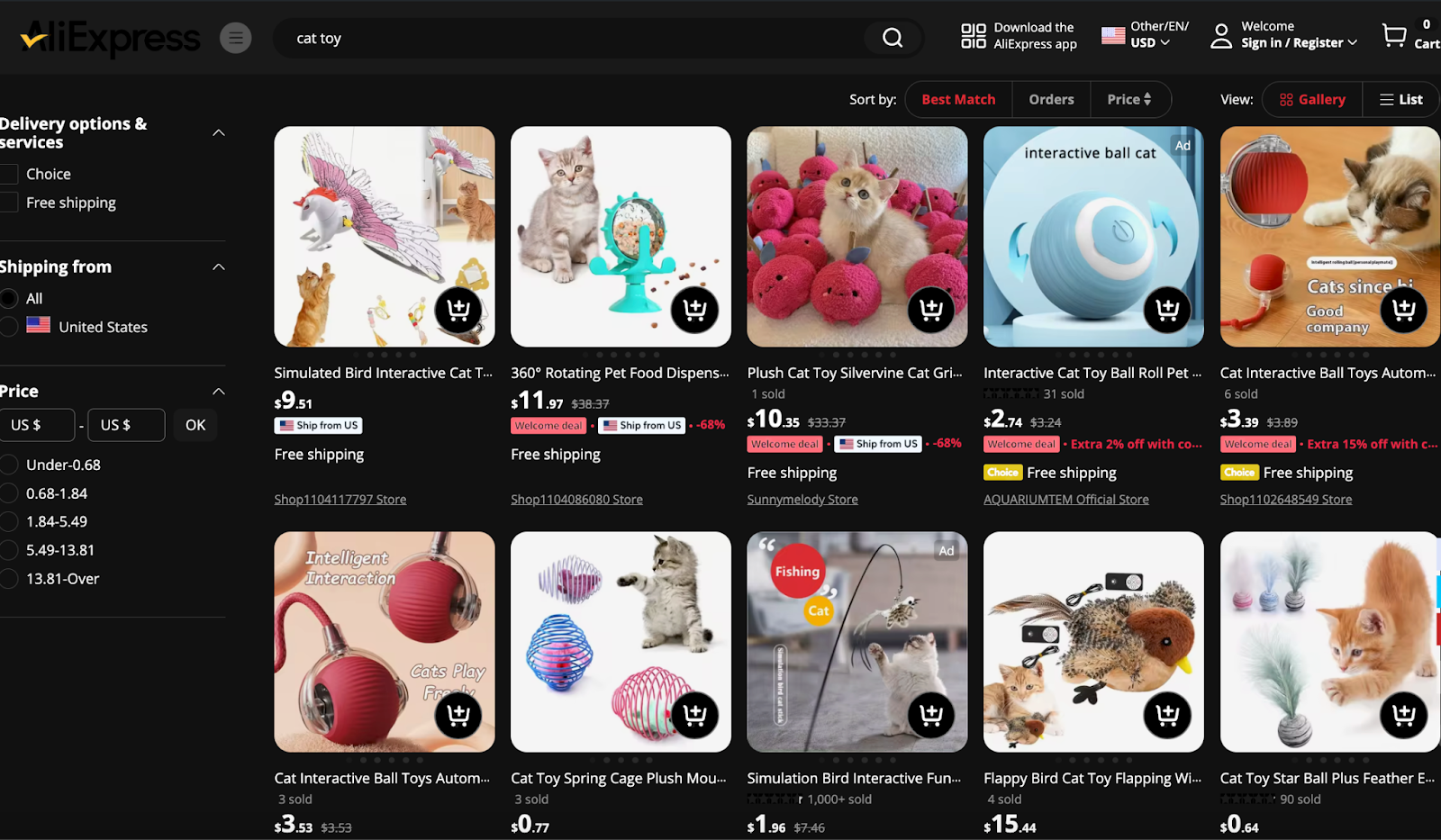
Pet owners are a customer base that is also seemingly always in the market for something that can please or occupy their furry friend. Another bonus about this category is that if you or a friend have a pet, you can film tons of marketing material with viral potential.
Examples include an eye-catching cat toy or funny costume for dogs, both of which do very well with organic content marketing.
5. Digital products
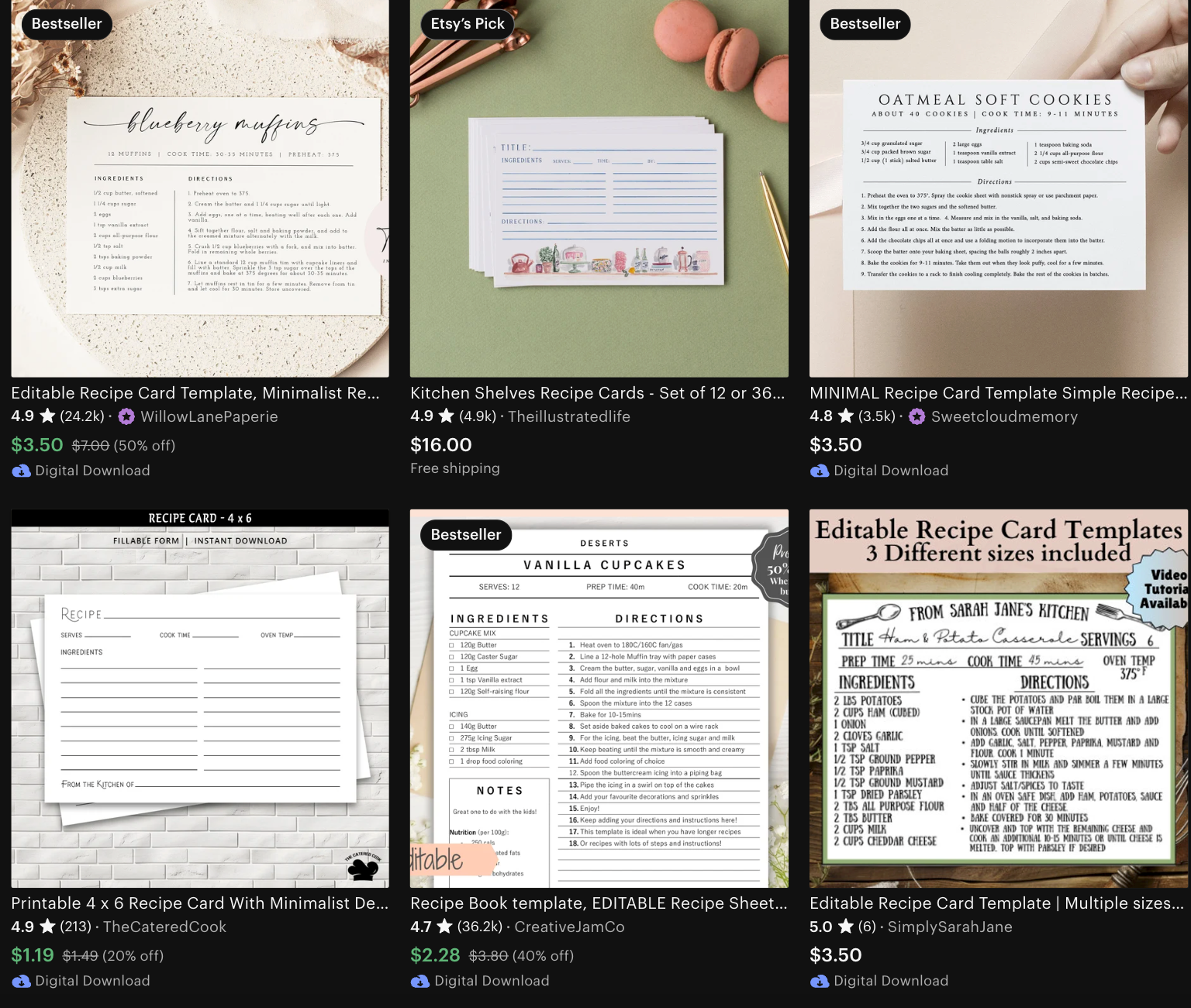
While marketing and selling digital products by dropshipping can take a higher degree of creativity and finesse, you’ll be reaping many of the inherent benefits that all sellers of this type of product have.
Additionally, you won’t have to go through the potentially lengthy process of creating the product yourself if you’re dropshipping or selling PLR content.
Why digital dropshipping is the most lucrative way to make money online
Digital dropshipping is another free method to dropship, as long as you’re using a platform like Whop, which is free to sign up for with no recurring subscription fee.
Like physical dropshipping, there’s no need to handle inventory. Here's how and why digital dropshipping works:
Instant fulfillment
One of the biggest issues for physical dropshipping is the fulfillment time. Not only are you at the mercy of the capabilities and speed of your supplier, but you’re also often dealing with suppliers who are overseas that ship with standard methods, meaning that your customer will generally wait longer than normal to receive the product.
Even if you happen to have the option for expedited shipping, this could cut into your profit margins too much or it might only be possible if you score a domestic supplier.
While this issue can be handled with clear communication up front to your customer who might not mind the wait, with digital dropshipping, this isn’t an issue at all as delivery is instant.
A well-made platform like Whop, which is home to a large assortment of products that you can “dropship” digitally (i.e. refer customers to purchase), will instantly and securely deliver your customer’s files or access to digital goods immediately upon purchase.
Incredibly diverse
While a platform like AliExpress may have millions of products in tens of thousands of niches, the diversity of digital products is even greater, so they have the potential to align with anyone looking for a solution to whatever problem they’re currently facing or to meet a desire that they hold.
This diversity spans not just niches but the products themselves, which can include anything from ebooks to courses to interactive communities and custom software solutions that address specific pain points of business owners or individuals who are ready to become customers ASAP.
Highly scalable
Dropshipping physical products is much more easily scalable than managing and selling your own inventory, but there are still bottlenecks that come from the inherent limitation of physical inventory, most notably inventory running out or issues such as an occasional defective product showing up.
The beauty of digital products is the incredible scalability and reliability that the customer will always get the same product immediately: there’s no larger burden for you to fulfill one digital dropshipping order or one thousand apart from the bandwidth for downloading which is offloaded and distributed to your customers anyways.
This means that you can grow your store to huge volume without taking on additional fulfillment burden other than perhaps more customer service or admin work which can easily be outsourced, especially because you’re working with higher profit margins.
Higher profit margins
No matter how cheap a physical product is, they still have an associated cost. Digital products are essentially free to produce once they’ve been made, so as a dropshipper of them, neither you nor your supplier will have production cost, meaning that you will basically have infinitely higher profit margins than physical products because you’re starting at a cost of zero.
This means that you can start at lower, more attractive price points without worrying about cutting into margins in terms of production cost or paying for shipping.
Additionally, you can sell higher ticket products and pocket huge profit margins that can make for generous deals with you and the creator of the digital product that you’re getting paid to market and sell through your platform or channel of choice.
Find dropshipping success with Whop
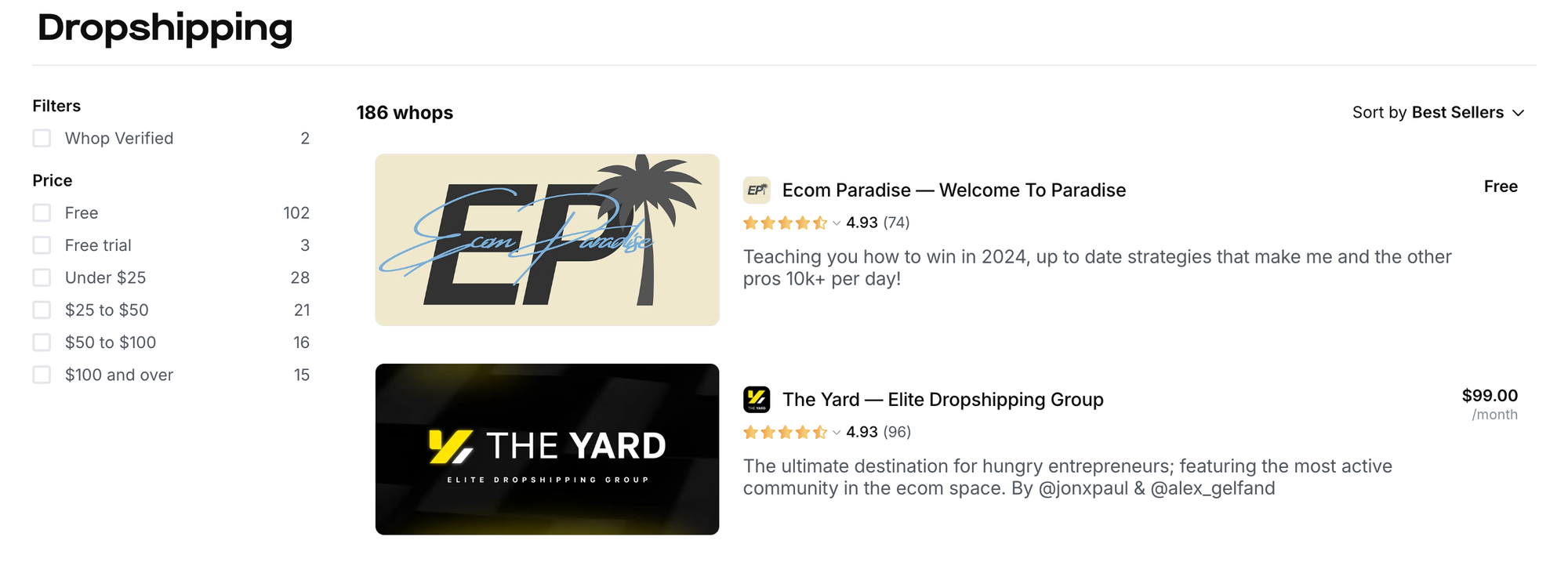
While embarking on the journey of dropshipping without spending any money can mean the start of a rewarding and lucrative venture, it isn’t without challenges that have the potential to delay or even completely derail your efforts.
If you want to fast-track your path to success, joining a top-rated, expert-led dropshipping community will not only lay out the blueprint to winning as a dropshipper, but you’ll do so in an environment that keeps you both motivated and accountable.
Additionally, you can take advantage of the opportunity of digital dropshipping by becoming a seller on the leading marketplace for all types of digital products - Whop. From courses to software and everything in between, you can sell it here - it’s both fast and free and gets you in on the most active and fastest-growing digital product ecosystems on the internet today.



